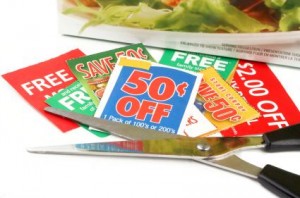There has been a lot of press lately regarding the dramatic drops in traffic for “daily deal” coupon sites such as Groupon and LivingSocial. As reported by the Atlantic Wire last week, both Facebook and Yelp are pulling back on their ventures into the daily coupon market. Some smaller niche coupon sites even went out of business. Experts predict that the daily deal bubble is going to burst very soon, and only a small handful of coupon sites will survive. Even the survivors (which are predicted to include both Groupon and LivingSocial) are showing signs of decreased traffic: Groupon was down 9% from June to July of this year, and LivingSocial was down 28%.
So, what’s with this sudden drop-off for daily deal coupon sites? Most experts attribute it to something they call “deal fatigue”, caused by the emergence of so many different daily deal sites over the past year. However, another significant factor may also be seasonality – Summer vacations may be interfering with normal web surfing behavior. It will be very telling to see if the traffic for these two daily deal sites picks up with the back-to-school time period.
However, it appears that Groupon is starting to back-off a little bit on their planned expansions and is taking things a lot more slowly than they originally planned. As reported on Mashable just two days ago, Groupon has put their planned IPO on hold and is “reassessing the timing on a week-by-week basis.” Their original plan was to go public just after Labor Day, coinciding with an investor road-show next week. The road-show has been postponed.
What can we take from all of this? Are people using fewer coupons? As it turns out – no. People are redeeming more coupons than ever before. According to a Nielsen Study from 2010, coupon redemptions grew by 27% in 2009, to 3.3 billion, marking the second-highest year-over-year growth in coupon redemption ever recorded. The trend of increased coupon redemption was validated again by a 2011 study by Valassis.
With coupon usage at a near all-time high, it’s important not to let the bad press about the recent poor performance of the daily deal sites color your perception about coupons in general. Daily deal sites are a very specific niche of the entire couponing category, and really represent a different type of business model than the billions of other coupons that manufacturers distribute every year.
With coupon usage increasing, it’s a good time to look at some statistics of how consumers use coupons. An interesting article came out recently on eMarketer, citing that one in 10 mobile users redeems coupons. As the article notes, “The popularity of mobile coupons extends the trend of searching for online coupons, which emerged as a widespread, money-saving activity during the recession.” eMarketer estimates that nearly 20 million US adults will redeem a mobile coupon this year, and that number is predicted to double by 2013.
How do those numbers stack up against coupon redemption in general? It may surprise you, but 88% of the coupons distributed in 2010 were in free-standing inserts (FSIs) coupon booklets. FSI total growth was 19 billion coupons, which was the largest volume increase of all media. FSIs also account for 53% of total coupon redemptions. The second largest share of coupon distribution occurred via handouts in-store, representing 5% of all coupons distributed. However, although digital coupons represent a small percentage of overall coupon distribution, there was a 37% increase in the number of digital coupon offers in 2010.
What we can take from this is that coupon usage is continuing to increase, and with the effects of the recession linger, we can expect the trend of increased coupon usage to continue. For just a taste of how excited some people get about using coupons, head over to the Entertainment Weekly article about TLC’s “Extreme Couponing” show, a one-off special that aired during the last week of December 2010 and yet drew unexpected ratings, causing the network to develop the concept into a full series. Be sure to click on the video at the bottom of the article to see a woman at the checkout counter use coupons to cut her grocery bill from a total of $230.38 to $6.92 by using coupons.
Clearly the “death of the coupon” has been grossly exaggerated.
Comments are closed.




